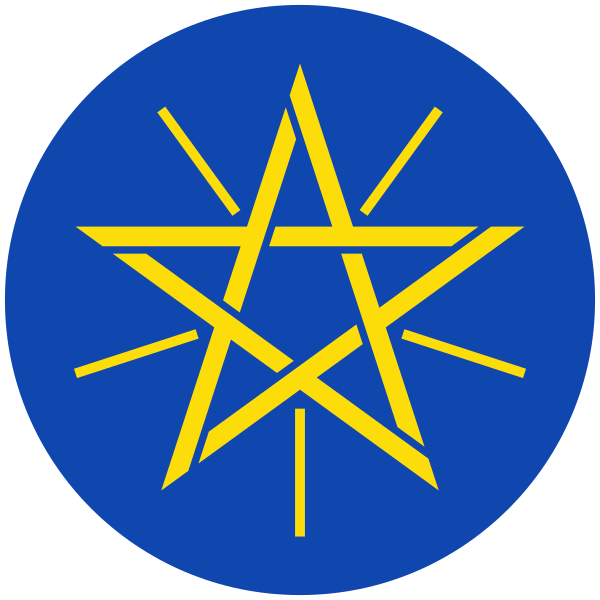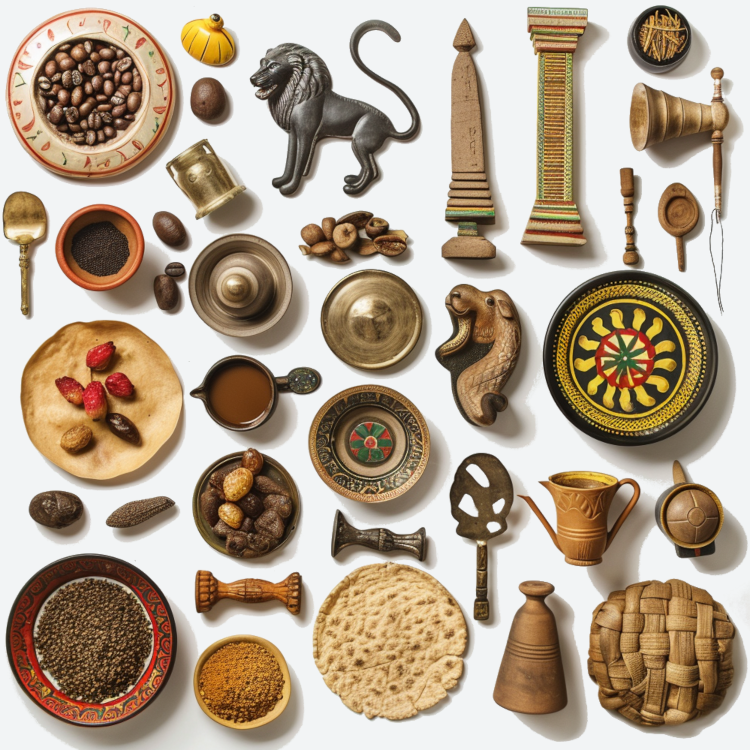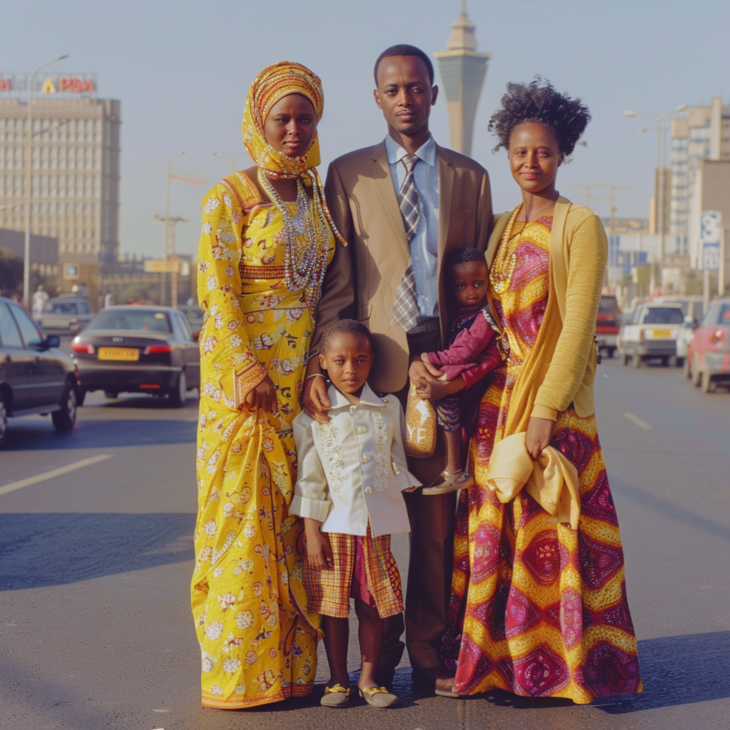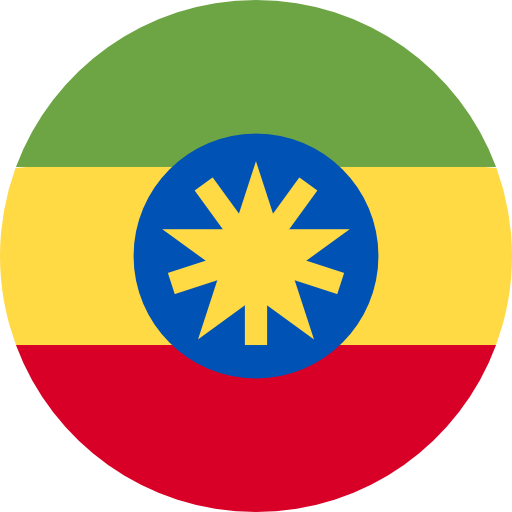About ET

Capital
The capital city of Ethiopia is Addis Ababa, which also serves as the political, economic, and cultural center of the country.
Population
Ethiopia is the second-most populous country in Africa, with a population exceeding 115 million people as of recent estimates.
Languages
The country is linguistically diverse, with over 80 different ethnic groups speaking more than 90 distinct languages. However, Amharic is the official language of Ethiopia.
Religion
Ethiopia is historically one of the oldest Christian nations in the world, with Orthodox Christianity being the dominant religion. There is also a significant Muslim population, particularly in the eastern and southern regions of the country.
Geography
Ethiopia has a diverse landscape, including highlands, plateaus, and lowlands. The Great Rift Valley runs through the country, providing spectacular scenery and unique geological features. The Simien Mountains in the north and the Bale Mountains in the southeast are notable mountain ranges.
History
Ethiopia is one of the oldest countries in the world, with a history dating back thousands of years. It is the only African country that was never colonized, although it was briefly occupied by Italy during the late 19th and early 20th centuries.
Economy
Agriculture is the mainstay of the Ethiopian economy, with the majority of the population engaged in subsistence farming. Coffee is a major export crop. In recent years, Ethiopia has experienced significant economic growth, particularly in sectors such as construction, telecommunications, and manufacturing.
Culture
Ethiopia has a rich cultural heritage, with traditions dating back thousands of years. Ethiopian cuisine is known for its unique flavors and diverse dishes, such as injera (a sourdough flatbread) and doro wat (a spicy chicken stew). Traditional music, dance, and art also play an important role in Ethiopian culture.
Politics
Ethiopia is a federal republic with a parliamentary system of government. The current Prime Minister is the head of government, while the President serves as the head of state. The country has undergone significant political reforms in recent years, including the release of political prisoners and the opening up of political space.
Challenges
Despite its economic growth and cultural richness, Ethiopia faces numerous challenges, including poverty, ethnic tensions, environmental degradation, and political instability. Access to basic services such as healthcare and education remains limited in many parts of the country.

National Items of Ethiopia
Lion of Judah
The Lion of Judah is a significant symbol in Ethiopia, representing strength, pride, and the legacy of the Ethiopian monarchy, particularly associated with Emperor Haile Selassie.
Coffee
Ethiopia is often considered the birthplace of coffee. Coffee symbolizes the rich agricultural heritage, social traditions, and cultural significance of coffee ceremonies in Ethiopian society.
Injera
Injera is a traditional Ethiopian flatbread made from teff flour. It symbolizes the culinary heritage and staple food of Ethiopia, integral to many Ethiopian dishes.
Axum Obelisks
The Axum Obelisks are ancient monumental stelae in Axum. They symbolize the rich historical and archaeological heritage of ancient Ethiopian civilization.
Timkat (Epiphany)
Timkat is the Ethiopian Orthodox celebration of Epiphany. It symbolizes religious heritage, cultural traditions, and the importance of the Ethiopian Orthodox Church.
Ethiopian Cross
The Ethiopian Cross is a unique and ornate cross used in the Ethiopian Orthodox Church. It symbolizes the religious and cultural identity of Ethiopia.
Lake Tana
Lake Tana is the largest lake in Ethiopia and the source of the Blue Nile. It symbolizes natural beauty, ecological significance, and historical importance.
Ethiopian Wolf
The Ethiopian Wolf (Canis simensis) is an endangered species native to Ethiopia. It symbolizes the country's unique biodiversity and conservation efforts.
Tibeb
Tibeb is a traditional Ethiopian woven cloth, known for its intricate patterns and vibrant colors. It symbolizes the rich artisanal heritage and cultural identity of Ethiopia.
Doro Wat
Doro Wat is a traditional Ethiopian spicy chicken stew. It symbolizes the rich culinary heritage and the unique flavors of Ethiopian cuisine.
Simien Mountains
The Simien Mountains are a UNESCO World Heritage site and symbolize the natural beauty, ecological diversity, and geographical significance of Ethiopia.
Haile Selassie
Haile Selassie, the last Emperor of Ethiopia, symbolizes the modern history, leadership, and global influence of Ethiopia, especially in the Rastafarian movement.
Teff
Teff is a grain native to Ethiopia and a staple in Ethiopian cuisine. It symbolizes the agricultural heritage and nutritional importance of traditional Ethiopian foods.
Enset (False Banana)
Enset is a staple crop in southern Ethiopia. It symbolizes the agricultural diversity and the importance of traditional farming practices.
Fasil Ghebbi (Gondar Castles)
Fasil Ghebbi is a fortress-city in Gondar. It symbolizes the historical and architectural heritage of Ethiopia's Solomonic Dynasty.
Addis Ababa
Addis Ababa, the capital city, symbolizes the political, cultural, and economic heart of modern Ethiopia.
T'ej
T'ej is a traditional Ethiopian honey wine. It symbolizes cultural heritage, traditional brewing practices, and social traditions.

The national anthem of Ethiopia is called "Ethiopia Hoye Hoye" in Amharic, the official language of Ethiopia. Here are the lyrics in both Amharic and English:
ኢትዮጵያ ሆይ ሆይ
እንተው አደራ
ህዝብና አምላክ ሰላም ያለው
አሁን በእኛ ላይ
ለመስማት ከሚያምር
እንተው ትንቢት እናዘንባለን
እኛም እንደኛ ሆንን ዘንድ በእኛም
ኢትዮጵያ ለወገኔ ለኢንተርኔት
እኛም እንደኛ ለእኛ ሆንን
የእግዚአብሔር ዕድሜ ነው
ሆኖአል አይደለን
Ethiopia, be happy!
Raise the flag of Ethiopia,
The pride of its people and the symbol of peace,
In the middle of us,
For the honor of the country that we cherish,
We are ready to give our life.
Ethiopia, for our descendants and our heritage,
We are ready to protect you.
The day is near when we shall see,
Our flag over Ethiopia.


